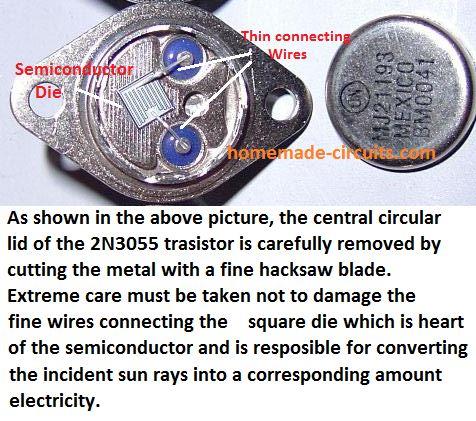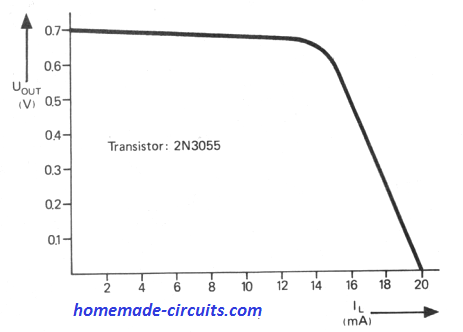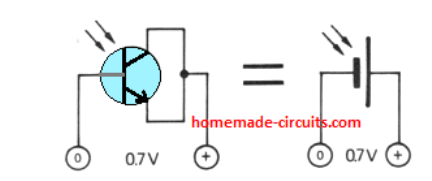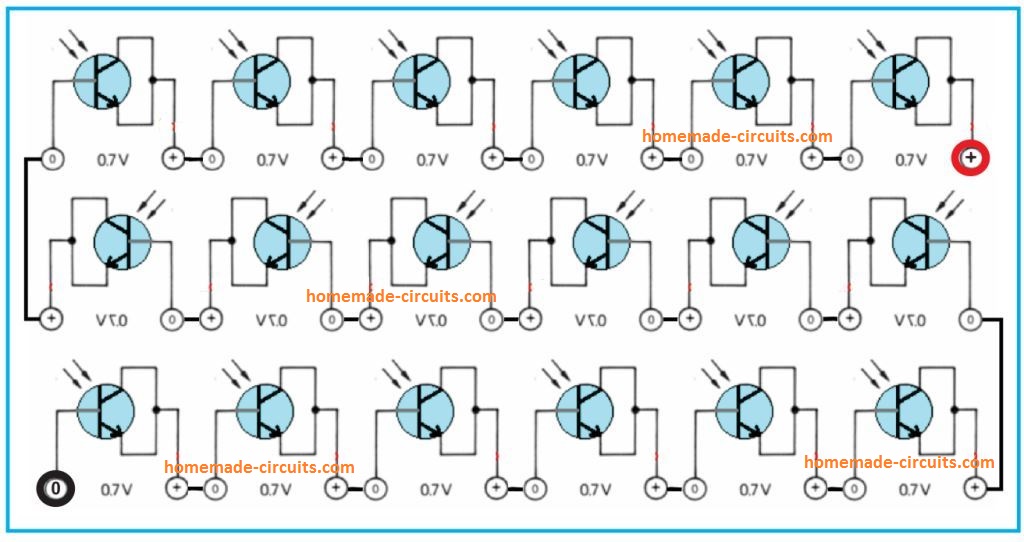The majority of newbie electronic hobbyists would certainly have a couple of burned up power transistors such as 2N3055 hiding inside their junk box.
Supposing we have their internal semiconductor junctions still intact, the device could be transformed into a nice little solar cell by filing or sawing off the top cap of the device, in order to uncover the internal embedded chip die.

How much Current can be Generated with a 2N3055 Solar Cell?
When this 2N3055 chip semiconductor is exposed strong sunlight, will probably crank out approximately 0.7 V at currents as high as 20 mA. The graph demonstrates output voltage drawn versus load current.

How to Increase Curent
Since the surface area of the silicon chip is tiny when compared to a standard solar cell you may need a magnifying glass or a convex lens to concentrate sun rays over the silicon die chip in order to boost the output current.
On the other hand, extremely strong concentrated sunlight is strictly not advised, which may otherwise permanently burn the transistor junction!
Advantage of Using New 2N3055
In case a transistor in good condition is utilized then you may find the output current doubled, when the collector-base and emitter-base junction a are wired up parallel, as indicated in the circuit diagram.

This may not be possible if the transistor is already faulty. This is because a damaged transistor may have a faulty junction which may be short-circuited, causing a short at the output of the solar cell.
How to get 12 V from 2N3055 Solar Cell
To get 12 V from 2N3055 customized solar cells, you may have to join 18 of these in series, as demonstrated in the following diagram.
Since each device is capable of producing around 0.7 V, the total voltage generated could be around 0.7 x 18 = 12.6 V. However, the maximum current wouldn't change and be still around 40 mA.

Warning: Please do not use the outdated Germanium power transistors, because these types may possibly include extremely toxic ingredients. On the other hand, a leading semiconductor producer have ascertained that the more contemporary silicon devices, including the 2N3055, are absolutely safe in this regard.
Hi please provide the technical specifications of the LED backlight, I’ll try to figure it out for you
Can I get a 12v solar charge controller.
And also, I want to use sg3524 to build an inverter circuit so that for 12v inverter at 10volts supplies voltage to pin 10 to shut down the oscillator
Please use the search box at the top to find solar charger circuits.
For the feedback you can refer to the 3rd circuit from the following post:
https://www.homemade-circuits.com/sg3525-pure-sinewave-inverter-circuit/
Inverter Circuit with Feedback Control
Thanks for your information sir.
How can it be connected in parallel to increas current. I want to try it.
Make many of these 12V modules, and simply connect their +/- together.
hi,
1 i would like a drum circuit that uses a twin t oscillator. thanks.
2 if you want a solar cell power supply use the cells out of solar walk lights.
3 when you install them for the original use, grease the battery ends as the battery usually leaks and corrodes the terminals.